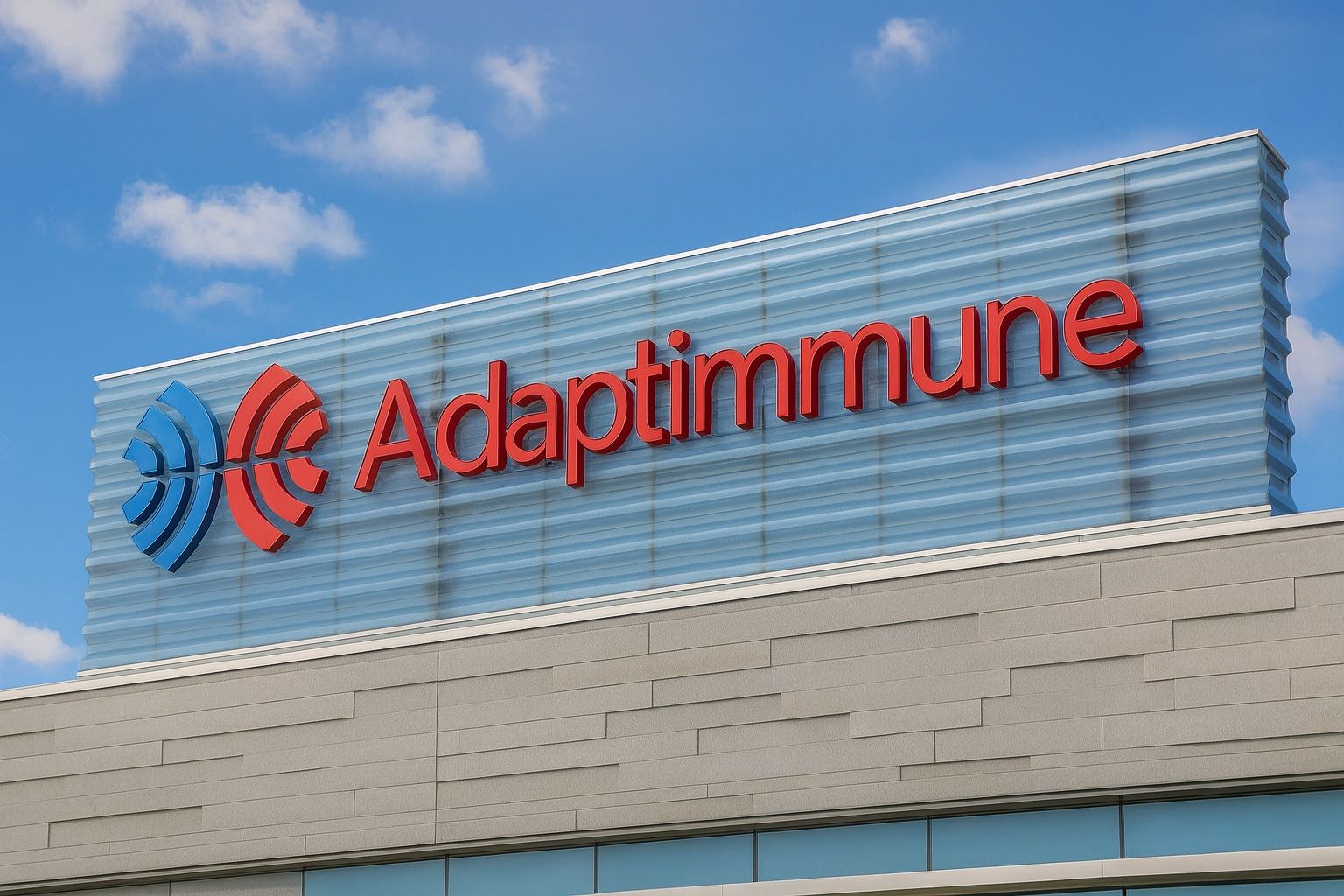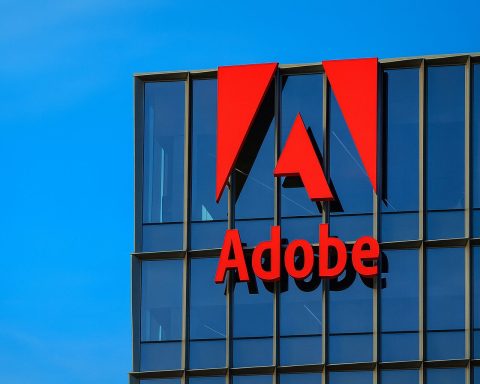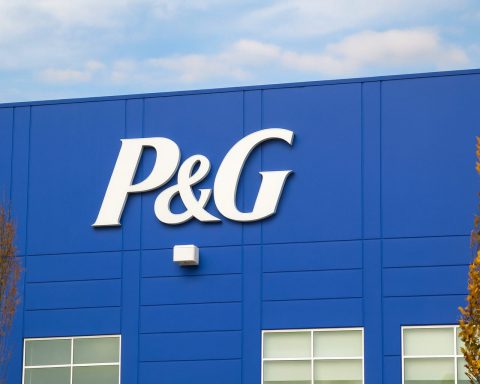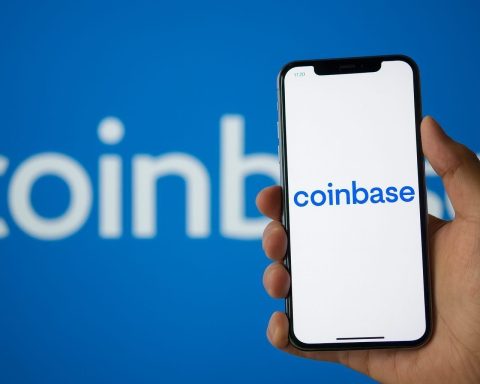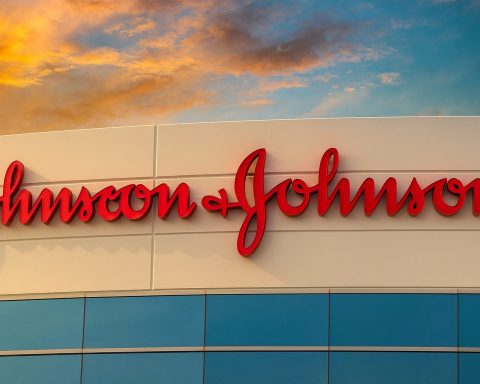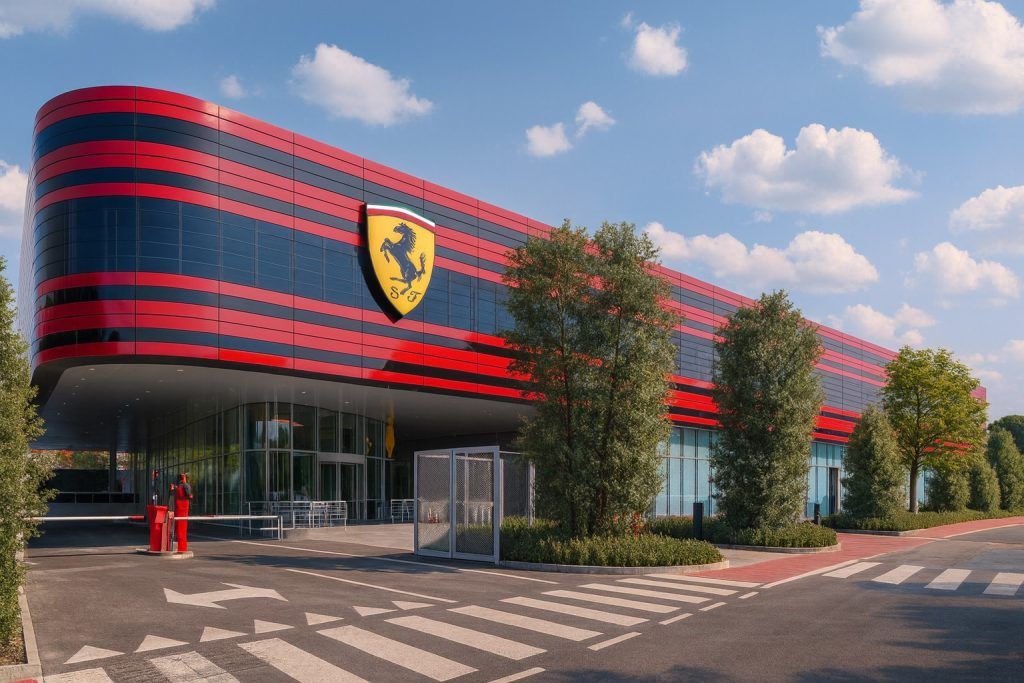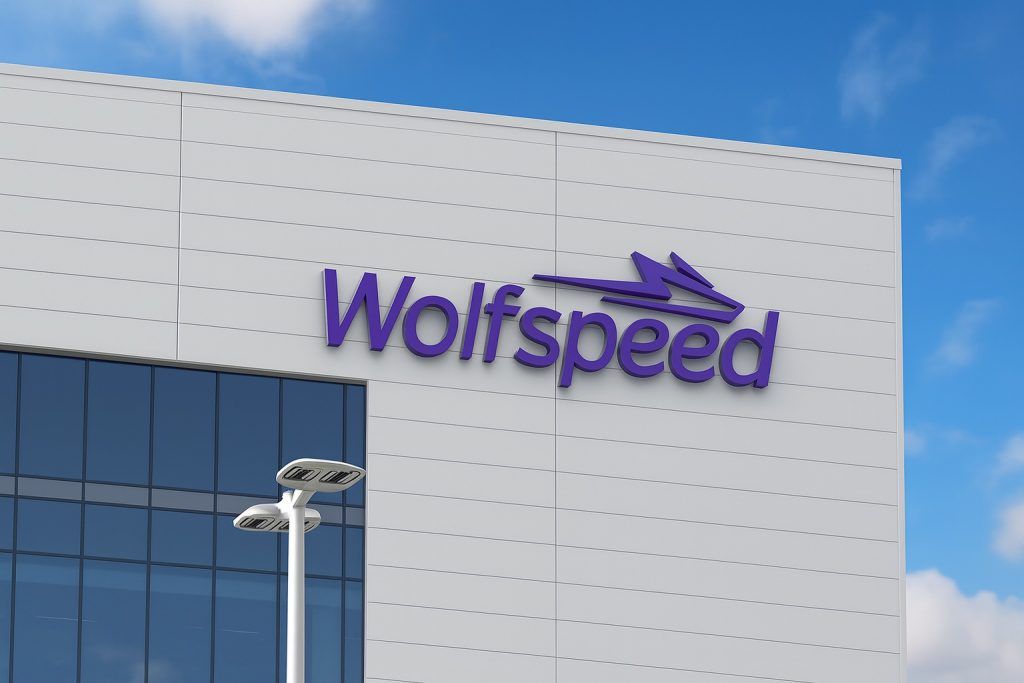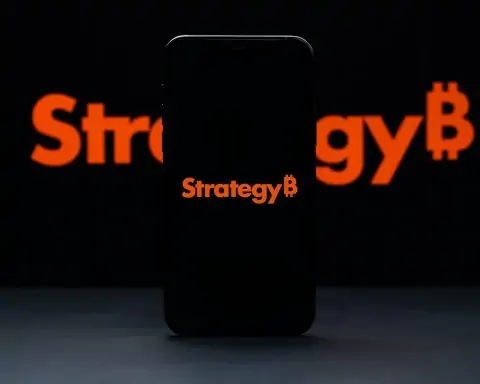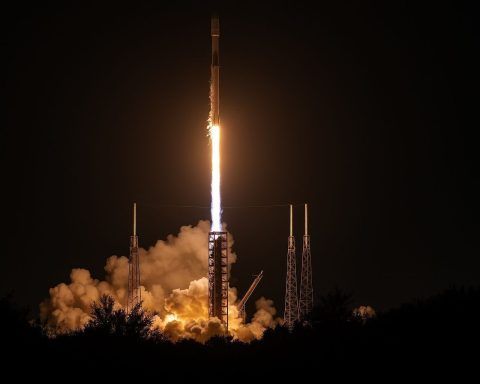- Volatile Surge: Adaptimmune Therapeutics (NASDAQ: ADAP) stock spiked dramatically in early October 2025 – leaping 52% on October 8 alone – driven by speculative trading rather than any new breakthrough [1]. Even after this rally, shares around $0.20 remain deep in penny-stock territory and are down ~75% over the past year [2] [3].
- Company Pivot: Facing a cash crunch, Adaptimmune sold its four leading T-cell therapy programs – including its newly approved cancer therapy Tecelra – to US WorldMeds in mid-2025 for $55 million upfront (plus $30 million in milestones) [4]. This drastic move paid off all debt and left Adaptimmune focusing on a slim pipeline of early-stage assets (PRAME and CD70-targeted T-cells) [5] [6].
- Financial Strain:Q2 2025 revenue was $13.7 million (boosted by Tecelra’s launch) with a net loss of $30.3 million [7] [8]. Cash dwindled to ~$26 million by mid-year [9], prompting “substantial doubt” about the company’s ability to continue as a going concern [10]. Management expects the post-sale cash to last into mid-2026, but future revenues now depend on milestone payments or new partnerships [11].
- Analyst Sentiment: Experts are largely bearish or cautious. In October, Weiss Ratings slapped ADAP with an extremely low “Sell (E+)” grade – basically flagging it as one of the riskiest stocks in the sector [12] [13]. Major Wall Street firms downgraded ADAP over the summer (Guggenheim, Mizuho, Barclays) and no major analyst rates it a Buy now [14] [15]. Consensus sits at Hold/Reduce, with even optimistic price targets (around $0.28) only modestly above the current price [16] [17].
- Technical Focus: ADAP’s chart is extremely volatile. Recent frenzied trading saw intraday swings of 50–60% [18] [19] and volume 10x the norm. The stock’s early October jump pushed it up to its 200-day moving average near $0.20 [20] – a key resistance level. If shares hold above ~$0.20, it could signal a bullish trend reversal, but failure to sustain that level risks a slide back to support in the mid-teens ( ~$0.12–$0.15) [21]. With a beta ~2.5, ADAP is twice as volatile as the market [22], making it a high-risk trading vehicle.
- Near-Term Catalysts: The next known catalyst is Q3 2025 earnings in November, which will likely show minimal revenue now that Tecelra sales are off the books [23]. Absent positive surprises (e.g. cost guidance or an extended cash runway), the results could remind investors of ADAP’s fragile fundamentals. Conversely, any new partnership or licensing deal – for example, if Adaptimmune finds a collaborator to advance its PRAME or CD70 T-cell programs – could validate the recent speculative optimism and lift the stock [24] [25].
- Long-Term Outlook: Adaptimmune today resembles a binary bet. Bulls argue its ~$50 million market cap is covered by cash, giving investors the remaining pipeline “for free” [26]. If it secures a new immunotherapy partnership or becomes a takeover target for its TCR technology, the stock could rebound significantly. However, bears warn that without new deals, cash will dwindle and further dilution or even insolvency looms [27] [28]. The company’s future hinges on its ability to “adapt” – either by reinventing itself around its early-stage science or attracting a larger savior – before time and money run out.
- Competitive Landscape: Adaptimmune pioneered TCR T-cell therapy for solid tumors (its SPEAR T-cell platform) and achieved the first FDA approval in this field with Tecelra in 2024 [29] [30]. Yet, the solid tumor cell therapy arena is littered with challenges. Big pharma partnerships have come and gone (GlaxoSmithKline and Roche’s Genentech both pulled back from Adaptimmune collaborations by 2024) [31] [32]. Rivals like Iovance (tumor-infiltrating lymphocytes) and Immatics (TCR therapies) continue to advance late-stage trials [33] [34], highlighting both the promise and difficulty of these technologies. With its lead products sold off, Adaptimmune is now out of the near-term race and will likely need to partner or sell its remaining assets to stay relevant [35].
Company Overview: Pioneering T-Cell Therapies for Cancer
Adaptimmune Therapeutics plc is a UK-based biotech founded in 2008, specializing in T-cell receptor (TCR) engineered cell therapies to fight cancer [36]. The company’s mission has been to “redefine how some of the most challenging-to-treat solid tumors are treated” by harnessing patients’ own T-cells and genetically equipping them to target cancer cells [37]. Adaptimmune’s proprietary platform, known as SPEAR T-cells (Specific Peptide Enhanced Affinity Receptor), allows it to design TCRs that recognize tumor-specific antigens (such as MAGE-A4 or NY-ESO-1) and arm patient T-cells with these receptors [38] [39]. In effect, it’s analogous to CAR-T immunotherapy (which has revolutionized some blood cancers) but applied to solid tumors, a far tougher environment due to tumor defenses and heterogeneity [40].
This innovative approach attracted major partners over the years. GlaxoSmithKline (GSK) collaborated with Adaptimmune in 2014 on the NY-ESO-1 TCR program (which led to the development of letetresgene, or “lete-cel”) [41]. Later, in 2019, Roche’s Genentech inked a blockbuster alliance worth up to $3 billion to co-develop allogeneic (off-the-shelf) TCR therapies [42]. These deals validated Adaptimmune’s science, but also underscored its dependency on larger players. Notably, Genentech terminated the partnership in April 2024 amid its own strategic re-prioritizations [43]. The loss of that alliance – after Adaptimmune had received over $150 million upfront – was a major blow, signaling that even pharma giants were becoming cautious about expensive cell therapy programs [44].
Amid these ups and downs, Adaptimmune sought to scale up via mergers. In early 2023, it merged with TCR² Therapeutics (NASDAQ: TCRR) in an all-stock deal [45]. TCR² brought complementary pipeline assets (like a mesothelin-targeted T-cell therapy for mesothelioma) and additional cash, with the combined entity aiming to be a “preeminent cell therapy company for solid tumors” [46]. For a time, the future looked bright: by late 2024, Adaptimmune was on the cusp of having two personalized T-cell therapies on the market – a remarkable feat in cutting-edge oncology.
The first of these, Tecelra (afamitresgene autoleucel), made history as the first FDA-approved TCR-engineered cell therapy for a solid tumor when it was greenlit in August 2024 [47] [48]. Tecelra targets the MAGE-A4 antigen and was approved for advanced synovial sarcoma, an ultra-rare cancer, after showing about a 39% response rate in trials [49] [50]. Adaptimmune launched Tecelra commercially in late 2024, establishing treatment centers and treating initial patients into 2025 [51] [52]. Hot on Tecelra’s heels was letetresgene autoleucel (lete-cel), a TCR therapy targeting NY-ESO-1 for synovial sarcoma and myxoid/round cell liposarcoma. Lete-cel delivered impressive Phase 2 results (42% response rate, including some complete remissions) [53] [54], earning an FDA Breakthrough Therapy designation in early 2025 [55]. By mid-2025, Adaptimmune was preparing to file a Biologics License Application (BLA) for lete-cel, aiming for approval in 2026 [56] [57].
In short, as of mid-2025 Adaptimmune had evolved from a pure research outfit into a commercial-stage biotech with one therapy on the market and another nearing the finish line. The company’s technology – using affinity-enhanced TCRs to target cancers previously out of reach – put it at the forefront of immunotherapy innovation. However, this rapid ascent would soon collide with harsh financial realities, forcing an abrupt strategic U-turn (detailed below).
Recent News & Stock Performance (Fall 2025)
Adaptimmune’s stock has been on a rollercoaster ride in 2025, especially in recent weeks. After a prolonged slump to mere pennies, ADAP suddenly caught fire in late September, fueled by speculative buzz. On September 19, 2025, the stock exploded nearly 98% in one day, opening at just $0.08 and closing at $0.16, then jumping another 30% to ~$0.2020 in after-hours trading [58]. This stunning move – with no company news announced that day – was accompanied by trading volume of over 705 million shares (vs ~60 million average) [59], indicating a frenzy of retail trader or algorithmic interest. Market observers noted ADAP as one of the day’s top gainers, despite the lack of a fundamental catalyst [60] [61].
Fast-forward to early October, and another speculative surge took place. After drifting back down to ~$0.14 in late September [62], ADAP stock skyrocketed ~42% on October 8, 2025, hitting intraday highs around $0.239 [63] [64]. Once again, volume was extraordinarily high (400+ million shares by mid-day) and the stock became one of NASDAQ’s top percentage gainers that session [65]. The next morning (Oct 9), ADAP was up nearly 11% in pre-market trading, extending the rally [66]. Traders on social media and forums were buzzing about a possible “short squeeze” or simply riding momentum. Crucially, no new product announcements or clinical results had emerged – the rally appeared to be entirely sentiment-driven. As one analysis put it, the latest spikes were propelled by “technical trading, short covering, or investor speculation rather than fundamentals”.
One piece of news that coincided with the October jump was an analyst ratings update that underscored the stock’s risks. On October 8, Weiss Ratings, an independent research firm, issued a “Sell (E+)” grade on ADAP – an exceptionally low score on its scale [67] [68]. (Weiss uses letter grades; E+ is essentially a deep junk rating reserved for companies with serious financial troubles [69].) This rating, implying very high risk and poor investment quality, actually reaffirmed what many on Wall Street were already expressing. Over the summer, multiple banks downgraded Adaptimmune: for example, Mizuho cut the stock from Outperform to Neutral in June and slashed its price target from $1.50 to $0.50 [70] [71], citing the company’s uncertain outlook post-asset sale. Guggenheim also threw in the towel around that time, moving ADAP from a “buy” to a “hold” [72]. Even Barclays had reiterated an Underweight/Sell. By October, no major analysts recommended buying ADAP, reflecting pervasive caution [73]. According to data aggregated by MarketBeat, the stock had 1 Buy, 5 Hold, and 2 Sell ratings – effectively a consensus to reduce exposure [74].
Paradoxically, such bearish sentiment from “smart money” may have only emboldened some retail traders to jump in, viewing ADAP as a potential rebound play. This dynamic of negative fundamentals but positive price action can create a dangerous feedback loop. Indeed, Adaptimmune’s stock at ~$0.18–$0.22 is still down over 80% year-to-date despite the recent bounce [75], and it sits far below its 52-week high of $0.91 [76]. The 52-week low was just $0.04 (hit during the summer sell-off) [77] – meaning even after quadrupling from those lows, the stock remains a tiny fraction of its former value. This context is important: the recent rallies, while spectacular in percentage terms, have only lifted ADAP off the very bottom. Many long-term shareholders are still deep underwater.
For now, Adaptimmune’s name is back on traders’ radar, but mostly as a volatile penny-stock play. The company’s underlying news flow in fall 2025 has been sparse – no new clinical trials started, no new drugs approved, and (after the asset sale) little in the way of product updates. The focus has shifted to financial maneuvers and speculation about what’s next, rather than typical biotech milestones. This sets the stage for a closer look at why the company ended up in this situation, and what its fundamental picture looks like after the dramatic restructuring in 2025.
Fundamental Analysis: Financials, Asset Sale, and Pipeline Reset
A look at Adaptimmune’s fundamentals reveals why the stock became so distressed in the first place. The core issue has been a classic one for clinical-stage biotechs: high cash burn and limited revenue. Despite achieving its first product launch in 2024, Adaptimmune remained unprofitable with heavy R&D and manufacturing expenses.
In Q2 2025, the company’s last quarter before its strategic pivot, Adaptimmune actually delivered better-than-expected results in some respects. Revenues for Q2 came in at $13.7 million, beating consensus estimates (which ranged roughly $8–11 million) [78]. This was driven almost entirely by Tecelra sales – the new sarcoma therapy contributed $11.1 million in product revenue, as 16 patients were treated/invoiced in Q2 [79]. That represented >150% growth in patient volume over Q1, thanks to an expanding network of treatment centers and smooth reimbursement (no insurance denials) [80]. By all accounts, Tecelra’s launch was off to a promising start for an ultra-rare cancer drug.
However, the cost side was grim. Adaptimmune reported a Q2 net loss of $30.3 million (–$0.11 per share) [81], only slightly narrower than expected. The improvement was mainly due to aggressive cost-cutting: R&D spending was down 43% year-over-year as the company started trimming programs and headcount [82]. Even so, by June 30, 2025, cash and equivalents had dwindled to just $26.1 million [83] (down from ~$91 million at the end of 2024). Management openly acknowledged on the Q2 earnings call that cash would run out in less than 12 months without drastic action [84]. This raised the specter of a potential bankruptcy or dilutive emergency financing – a dire scenario for a company that, just months prior, was celebrating its first FDA approval.
Facing this financial cliff, Adaptimmune’s board initiated a review of “strategic alternatives” in mid-2025. The outcome was a dramatic fire-sale of key assets announced on July 28, 2025: Adaptimmune would sell essentially its entire late-stage and commercial portfolio to US WorldMeds, a private Kentucky-based pharma company [85]. The deal included Tecelra and three pipeline TCR therapies (lete-cel, afami-cel, and uza-cel). In return, Adaptimmune would receive $55 million in cash upfront and up to $30 million in potential milestone payments [86]. To put this in perspective, $55 million was roughly equal to the company’s own market cap at the time – highlighting how far the stock had fallen, since those assets had once been valued much higher.
Management framed the deal as the only viable path to preserve value for stakeholders (and to ensure patients could keep accessing Tecelra). CEO Adrian Rawcliffe bluntly stated that “given the financial situation of the company, securing the right strategic option was critical… to ensure our patients continue to receive Tecelra” [87]. In other words, Adaptimmune could no longer afford to independently commercialize Tecelra or bring lete-cel to market. By selling them, the therapies would get a better-funded owner (US WorldMeds) and Adaptimmune would get a lifeline of cash to stay solvent [88].
The transaction closed swiftly (within days, by early August 2025). Adaptimmune used a chunk of the $55 million to fully repay its debt (~$40 million owed to Hercules Capital) [89]. This was crucial, as it removed interest burden and any default risk from the balance sheet. The company then embarked on a massive restructuring: US WorldMeds agreed to hire roughly half of Adaptimmune’s over 500 employees (mostly those in clinical development and manufacturing for the transferred programs) [90]. Adaptimmune laid off ~62% of its remaining staff post-deal [91], leaving only a “skeleton crew” of researchers and administrative personnel. Several top executives departed as well – by August, the Chief Medical Officer, Chief Scientific Officer, Chief Commercial Officer, and CFO had all exited the company [92]. Essentially, Adaptimmune slimmed down to a near-shell of its former self, retaining only what was needed to continue early R&D on a couple of projects.
Let’s clarify exactly what went out the door in the US WorldMeds deal versus what Adaptimmune kept:
- Sold to US WorldMeds:
• Tecelra® (afamitresgene autoleucel) – the FDA-approved MAGE-A4 TCR therapy for synovial sarcoma [93] [94]. (Adaptimmune relinquished all rights; USWM now markets Tecelra and handles patient access.)
• Letetresgene (lete-cel) – late-stage NY-ESO-1 TCR for sarcoma (BLA filing was imminent) [95]. (USWM will complete development and, if approved, commercialize it. Adaptimmune could get milestone payments upon lete-cel’s FDA approval [96].)
• Afami-cel – essentially the same product as Tecelra (afami-cel was the development name) [97]. Included in the sale (this is just a technical note; Tecelra/afami-cel is one program).
• Uzatresegene (uza-cel) – a next-gen MAGE-A4 TCR program, partnered with Galapagos NV in 2024 [98]. (Uza-cel was preclinical; presumably an allogeneic or enhanced TCR approach. USWM now takes over this program in collaboration with Galapagos [99].)
• Next-gen SPEAR programs (e.g. ADP-A2M4CD8 SURPASS trial) – Adaptimmune had been testing a second-generation TCR that co-expressed CD8 for solid tumors [100]. Any ongoing studies (like the SURPASS trial) were effectively halted or handed off when the MAGE-A4 franchise was sold, though details weren’t fully clear. - Retained by Adaptimmune:
• ADP-A2MPR (PRAME-targeted TCR) – a preclinical TCR therapy against the PRAME antigen, which is expressed in many cancers (melanoma, lung, ovarian, etc.). This program was put on hold in early 2025 to save cash [101]. Adaptimmune kept the rights to it, hoping it could be revived later or partnered. PRAME is considered a promising target (other companies like GSK and Sellas have shown interest), so this asset could hold value if developed further [102].
• ADP-A2MCD7 (CD70-targeted program) – an early effort (possibly allogeneic) aimed at CD70, an antigen in certain leukemias and lymphomas. Also on hold as of 2025 [103]. Adaptimmune retained it.
• Allogeneic T-cell platform – Adaptimmune’s research into off-the-shelf TCR T-cells (including tech inherited from TCR²) remains with the company [104]. This is purely in R&D stage, but conceivably a draw for future partners given the industry’s interest in allogeneic cell therapy.
The net effect is that Adaptimmune’s pipeline was split: it gave up the advanced, near-commercial therapies in exchange for cash, and is left with only preclinical projects under its direct control [105]. This marked a reset of the company’s strategy – from pushing multiple products toward market, back to being a research-focused outfit that must carefully conserve resources.
Financially, the deal provided crucial breathing room. With debt gone and an influx of cash, Adaptimmune projected it had enough funds to operate through at least Q2 2026 under its downsized structure [106]. But importantly, because it sold revenue-generating and near-term revenue assets, Adaptimmune now has little to no recurring revenue. Its only potential income in coming years (aside from dwindling collaborations) would be the milestone payments from US WorldMeds – which are contingent on events like lete-cel getting approved in 2026 or uza-cel entering trials [107]. Those are not guaranteed and, even if realized, total only $30 million at maximum [108].
Thus, from a fundamental standpoint, Adaptimmune post-asset-sale is almost like a new startup that happens to be publicly traded: it has some cash in the bank, a couple of interesting research ideas, but needs external help to turn those into products. The big question is whether the company can monetize or advance its remaining pipeline before the money runs out again. Management has indicated they will likely seek partnerships or collaborations for the PRAME and CD70 programs (mirroring Adaptimmune’s past strategy of aligning with larger pharma on big projects). It’s also possible that Adaptimmune itself could become an acquisition target, since a larger biotech might want to scoop up its TCR technology platform and early assets at a bargain price [109] [110]. We’ll discuss these strategic outlook scenarios further below.
One additional fundamental factor to note is shareholder dilution and insider activity. As of October 2025, Adaptimmune had not yet done a dilutive equity raise in response to the stock spikes (which some “meme” stocks do). But investors should be aware that with a share price around 20 cents, even small financings could require issuing hundreds of millions of shares. The company had previously warned of “substantial doubt” about its going concern status before the asset sale [111]. While the sale alleviated the immediate crisis, if no partnerships materialize, Adaptimmune might again face the dilution vs. survival dilemma by 2026 [112] [113]. Interestingly, some institutional investors increased their stakes earlier in 2025 when the stock was at rock-bottom – for example, hedge funds like Two Seas Capital and Long Focus Capital each accumulated over 20 million shares in Q1 2025, essentially bottom-fishing [114] [115]. On the flip side, a major insider, director Ali Behbahani, sold 14.7 million shares at $0.01 each in August (likely part of a forced transaction or penny warrant exercise) [116] [117], which sent a discouraging signal. These mixed actions highlight that confidence in Adaptimmune is low among insiders and many funds, though a few speculative investors see potential value at the current depressed price.
Analyst and Expert Commentary
Given Adaptimmune’s turbulent changes, analysts and industry experts have been frank in their assessments. The tone has generally ranged from cautious to outright pessimistic about the stock’s prospects, even as it whipsaws on hype. Below are some key viewpoints from named sources and seasoned observers:
- Weiss Ratings (Oct 2025): Weiss’s rare “Sell (E+)” grade is essentially a financial red flag [118] [119]. Weiss focuses on balance sheet health and viability; such a low score implies Adaptimmune is among the riskiest companies in its coverage. It indicates serious concern about Adaptimmune’s ability to continue operating without significant improvement. For context, Weiss typically reserves E-range grades for firms in distress – consistent with Adaptimmune’s own admission earlier in 2025 that it had substantial doubt about continuing as a going concern [120] [121]. In short, Weiss is signaling that ADAP is high-risk even by penny stock biotech standards.
- HC Wainwright (July 2025): Even before the asset sale, some analysts had grown wary. Notably, HC Wainwright (previously bullish on ADAP) downgraded to Neutral in mid-2025, essentially moving to the sidelines [122]. As one commentator summarized the sentiment: “Adaptimmune’s story has fundamentally changed – it’s no longer about revenue growth from Tecelra or upcoming approvals, but about whether the slimmed-down entity can reinvent itself or attract a buyer before the cash runs out.” This captures the shift in narrative that Wall Street had to undertake after the company sold its crown jewels.
- Mizuho Securities (June 2025): Mizuho’s analyst, in cutting the price target from $1.50 to $0.50 and lowering the rating, highlighted the dilution of shareholder value and the uncertain pipeline value post-sale [123]. Essentially, Mizuho implied that while the $55 million deal provided a lifeline, Adaptimmune had “given up” its near-term growth engines. “We see limited upside in the near term with only early-stage assets remaining,” the Mizuho note suggested, valuing ADAP stock not much above the cash on hand. This aligns with the market’s current pricing (which, as noted, assigns only a small premium above net cash for the remaining pipeline).
- FierceBiotech (Industry Media): Leading biotech news outlet FierceBiotech described the situation bluntly: the “writing was on the wall” for Adaptimmune’s independent ambitions leading up to the sale [124]. Despite the historic Tecelra approval, the company’s solo launch was burning cash rapidly, and the prospect of launching a second product (lete-cel) without a larger partner was daunting [125] [126]. FierceBiotech noted that Roche/Genentech’s decision to walk away in 2024, followed by Adaptimmune scrambling to do a smaller deal with Galapagos, signaled that big pharma had lost some confidence in Adaptimmune’s approach [127] [128]. In its July 28 coverage of the asset sale, FierceBiotech quoted CEO Rawcliffe’s own press release admission that “it is clear that securing the right strategic option was critical given the financial situation”, interpreting it as Adaptimmune essentially conceding defeat in trying to go it alone [129]. Analysts in that piece commended management for seeking a partner/buyer rather than risking a total collapse through inaction [130] [131].
- Investing.com / Nasdaq Analysis (Aug 2025): Following Q2 earnings, a commentary on Nasdaq.com highlighted the paradox in Adaptimmune’s results – strong initial commercialization metrics overshadowed by a crumbling financial foundation [132]. It noted year-on-year revenue was actually down 89% (because Q2 2024 had large one-time partnership payments) [133], and stressed that post-sale, “only two internal programs remain… now the main source of possible revenue” [134]. The analysis gave Adaptimmune a very weak financial health score (1.11 out of 5) and pointed out alarming stats like –97.7% gross margin and heavily negative cash flow [135]. One stark line from that report: “the company’s limited cash runway of less than 12 months could significantly impact future operations” [136] – underlining why management’s hand was forced.
In summary, expert opinion suggests Adaptimmune’s recent stock rally is on thin ice. Those bullish on the stock tend to be speculative retail voices focusing on the idea that Adaptimmune’s enterprise value is low relative to its technology and former assets. For instance, some argue that since the company got $55 million cash (roughly equal to its market cap), one is effectively getting the remaining pipeline for free [137]. They hold out hope that a new deal or data could reveal hidden value.
However, the bear case is dominant among professionals: without near-term revenue or a clear path forward, Adaptimmune might simply burn through its cash and end up back in a precarious state, making the stock likely to erode again. Most covering analysts err on the side of caution, as evidenced by the preponderance of Hold/Sell ratings [138]. ADAP has essentially become a “show me” story – the company needs to prove it can stabilize or that someone sees enough value to partner up, before skeptics will reconsider.
Technical Analysis: Chart Signals Amid Extreme Volatility
From a technical trading perspective, ADAP’s chart has embodied the boom-bust nature of a penny biotech. Key technical observations include:
- Moving Averages: The stock’s huge spikes have put short-term averages on an upswing. The 50-day moving average is around ~$0.09 [139], far below the current price after the recent run-up – reflecting how sharply the stock has climbed in a matter of weeks. Meanwhile, the 200-day moving average sits around ~$0.20 [140], roughly where ADAP traded after the Oct 8 surge. Technicians often view the 200-day as a long-term trend demarcation. Notably, ADAP had traded below its 200-day MA for most of 2025, so reclaiming ~$0.20 and holding above it would be a bullish signal of a potential trend reversal [141] [142]. Indeed, Oct 8’s close was right near this level. If the stock can consolidate above $0.20, it might form a new support base; failure and a retreat below the 200-day could indicate the rally was just a one-off short squeeze within a continued downtrend [143].
- Momentum Indicators: The sheer speed of ADAP’s ascent likely sent momentum oscillators into overbought territory. Although exact RSI (Relative Strength Index) values aren’t available in sources, a jump from $0.08 to $0.20+ in days almost certainly pushed RSI > 70 briefly [144]. After the September spike, the stock did pull back and chop around $0.12–$0.15 for a couple weeks, which would have relieved the overbought condition [145]. By early October, RSI probably reset to neutral before the next leg up. Traders should watch for RSI extremes; any new surge could again overshoot, leading to quick pullbacks as we saw.
- Support and Resistance Levels: Given ADAP’s low price, support/resistance levels are measured in pennies, but the swings have defined some key zones:
Resistance – Around $0.24 has emerged as near-term resistance, since ~$0.239 was the intraday high on Oct 8 [146]. Above that, the next psychological level would be $0.50, which coincides with certain analyst targets (Mizuho’s $0.50) and was an area of support-turned-resistance earlier in 2025 before the big crash [147] [148]. Reaching $0.50 would likely require a substantially positive catalyst.
Support – In the mid-teens, $0.12–$0.15 is a region of support, as that’s where the stock consolidated after the September jump and prior to the October rally [149]. Below that, around $0.08 is major support (essentially the pre-spike price floor) [150]. And the all-time low near $0.04 is the ultimate support backstop [151] – if things deteriorate, that prior low could be retested. It’s worth noting the “air pockets” in between these levels: the stock moved so fast that certain price ranges have little trading volume history, meaning if ADAP starts falling, it could drop quickly through thinly traded gaps until it hits a zone with more prior volume (and vice versa on the upside) [152]. - Trading Volume & Liquidity: One striking aspect has been the massive volume surges on rally days. On Sept 19, ~705 million shares traded [153]; on Oct 8, at least ~500 million shares [154]. For context, Adaptimmune has roughly 250–300 million ADR shares outstanding (post-merger and some dilution), so turnover exceeded the share count multiple times – indicating heavy day-trading and possibly algorithmic momentum funds piling in. Such high volume on up days is generally a positive sign of strong interest, but it can also signal a blow-off top if it exhausts buyers [155]. If volume rapidly dries up following these spikes, the stock may drift lower as the trade loses momentum. So far, ADAP remains on many traders’ active watchlists (flagged by scanners as a “most active stock” on multiple days) [156]. As long as it stays in play, volatility will persist.
- Risk Profile: By any measure, ADAP is a high-risk, high-reward technical play. Its beta ~2.5 means it’s more than twice as volatile as the overall market [157]. The average true range in recent weeks has been enormous – e.g. a 59% intraday swing on Oct 8 from low to high [158]. Traders have to position size accordingly (or employ stop-loss orders) because double-digit percentage moves are routine here. A technical analysis service (StockInvest.us) classifies ADAP as “very high risk” due to the wide Bollinger Bands and large daily fluctuations [159] [160]. They note the stock is at the upper part of a falling trend channel, which could present a selling opportunity if it mean-reverts, though a breakout above ~$0.237 could hint at trend reversal [161]. In plain terms: caution is warranted. The stock behaves more like a call option than a stable equity – capable of huge swings in either direction on any given day [162].
In summary, technical signals for ADAP are mixed. Short-term momentum and moving average crossovers are giving bullish hints since the price burst above its recent ranges [163]. At the same time, the extreme volatility and low price base make chart patterns less reliable. The 200-day MA (~$0.20) is the pivot to watch: sustained trading above it could attract more trend-following buyers, while a failure could see the stock retrace back toward support levels. Ultimately, fundamental news will likely override the technicals in determining ADAP’s next big move. Traders may enjoy the ride, but investors should remember that all the chart excitement stems from a tiny float whipping around on speculation.
Short-Term and Long-Term Outlook
Near-Term (Next 3–6 Months)
In the immediate future, Adaptimmune’s fate will hinge on delivering some encouraging news to justify its sudden market resurgence. The two most likely sources of such news are financial updates and pipeline/partnership developments:
- Q3 2025 Earnings (November): Adaptimmune is expected to report Q3 results in mid-November 2025 [164]. This will be the first quarter reflecting the post-asset-sale company. Analysts and investors will be parsing the report for cash burn figures and remaining cash balance, since with no Tecelra revenue, quarterly sales might drop near zero. If the company’s cash balance is, say, ~$30–40 million heading into Q4 (after the $55M minus debt repayment and ongoing expenses) [165], management’s commentary on runway will be critical. They have guided that cash should last into Q2 2026 [166], so any confirmation or extension of that guidance would be welcome. Conversely, if expenses were higher than expected or unforeseen costs arose, the runway could look shorter – spooking investors. Given the lack of product revenue now, Q3 will likely show a substantial sequential decline in revenue and possibly a continuing net loss (albeit a smaller operation now). The stock’s reaction will depend on how well this was anticipated and whether management can point to any mitigating positives (like further expense cuts or non-dilutive funding efforts).
- Pipeline/Partnership News: A potential game-changer in the near term would be a new collaboration announcement. For example, if Adaptimmune finds a partner to co-develop its PRAME TCR program, that could instantly validate the remaining pipeline and perhaps bring in some upfront cash. PRAME is a broadly interesting target – any sign that another biotech or pharma is willing to invest in Adaptimmune’s approach there could significantly boost sentiment. Similarly, a deal around the allogeneic platform (say, a research partnership with a cell therapy player) could be interpreted as Adaptimmune leveraging its tech expertise. Even restarting the paused programs (PRAME or CD70) on its own, if the company can afford it, would make news – though it’s unlikely without outside funding. Absent any such developments, the passage of time is a risk: if months go by with no partnerships or progress updates, the market’s patience may wear thin [167] [168]. In that scenario, ADAP shares could drift back down toward pre-spike levels (sub-$0.10) as the initial excitement fades.
- Market Environment: Broader market conditions for biotech funding play a role too. Through 2024-2025, small-cap biotech has been challenged in raising capital. If going into 2026 the environment improves (e.g. more risk appetite, biotech indices rising), Adaptimmune might find it easier to secure a strategic deal or even a modest equity raise on better terms. On the other hand, if risk-aversion continues, remaining a penny stock with no revenue could become increasingly untenable. Adaptimmune will likely try to avoid a reverse stock split (often used to boost share price for listing compliance) unless absolutely necessary, as such moves can further erode shareholder value. Nasdaq’s listing rules (usually requiring a stock above $1) could come into play in 2026 if ADAP doesn’t recover – something to watch.
In summary, for the short-term outlook, Adaptimmune’s story is at a crossroads. The bull case is that any positive surprise – a partnership, a creative R&D pivot, or even speculative hype around an upcoming catalyst – could propel the stock higher from these low levels. There is a scenario where ADAP finds stability: for instance, management could announce that they’ve identified promising new preclinical data for PRAME or that multiple parties are in talks for collaborations. Even an offhand hint of “strategic interest” could spark speculative buying.
The bear case, however, is that the recent spike will prove fleeting as hard realities reassert themselves. If Q3 earnings highlight the lack of revenue and ongoing cash burn, and if no deal news is forthcoming, the stock could retrace much of its gains. Essentially, the next few months will likely determine whether Adaptimmune can maintain investor interest or if it slides back into obscurity as just another struggling micro-cap biotech.
Long-Term (1–3 Years)
Looking further out, Adaptimmune’s trajectory presents a few divergent possibilities:
- Successful Reinvention: In a bullish long-term scenario, Adaptimmune manages to reinvent itself as a lean research powerhouse. Perhaps it forms a partnership to co-develop PRAME TCR with a mid-size oncology company, sharing costs and expertise. Maybe it also pivots some of its technology into adjacent areas – for example, using its TCR discovery platform to develop TCR-mimic antibodies or bispecific T-cell engagers (similar to what Immunocore, a related UK company, did in turning TCR insights into soluble drugs) [169]. If Adaptimmune can generate even early clinical data from one of its retained programs that show promise, it could attract new funding and climb out of penny-stock status. In this optimistic outcome, ADAP could potentially regain multiples of its current value over a few years – though likely not approaching the ~$1+ range of past analyst targets until it has a product in trials again. Long-term bulls effectively view the current company as a pipeline option: maybe worth very little now, but with a small chance of high payoff if a new breakthrough emerges.
- Buyout or Merger: Another positive (or neutral) long-term outcome would be M&A. Adaptimmune itself could be acquired by a larger entity. For instance, Galapagos NV, which partnered on uza-cel, might consider buying Adaptimmune outright to gain full control of the TCR platform and also scoop up PRAME/CD70 assets [170] [171]. Alternatively, another cell therapy player wanting to bolster their solid tumor efforts might make a move, especially given Adaptimmune’s bargain valuation. We’ve seen consolidation in this space before (Adaptimmune-TCR² merger, for example). If a buyout comes, it could offer shareholders a premium – though given the low share price, even a premium might be a modest absolute amount (e.g. a buyout at $0.30–$0.50 per share would be double to triple current levels, but still far below past highs). There’s also a possibility of a reverse merger: Adaptimmune could merge with a private company that wants a Nasdaq listing, essentially using ADAP as a shell. This sometimes happens if the original business has stalled. That scenario might not benefit current shareholders much unless structured favorably.
- Stagnation and Decline: On the flip side, the bearish long-term scenario is that Adaptimmune fails to secure any deals or new funding, and its remaining cash slowly dwindles over the next 18–24 months. The company might start one of its paused projects again, only to run out of funds to reach meaningful data. In absence of revenue, it could be forced to do dilutive share issuances at low prices, eroding the share value further (e.g. issuing hundreds of millions of shares for a few million dollars, a fate that has befallen other penny biotechs). If the stock stays under $1, there’s a risk of Nasdaq delisting or a reverse split, which can create additional headwinds. Ultimately, in a worst-case, Adaptimmune could end up having to liquidate or go through bankruptcy if it cannot find a path forward by the time cash runs out. Some investors have speculated about the company possibly returning cash to shareholders if no prospects emerge [172] [173], but small biotech boards rarely choose that route – they more often attempt a last-ditch pivot or merger rather than throw in the towel.
Taking a step back, it’s clear that Adaptimmune’s long-term outlook is highly uncertain and skewed to the extremes. The stock’s behavior already reflects this “binary” situation – it trades not on steady fundamentals, but on whether investors think a comeback is plausible. In effect, owning ADAP now is akin to holding a long-dated option: there’s a time value (cash on hand) and an underlying asset (the science) that could pay off, but it could also expire worthless [174].
Investors with a long view will be monitoring a few critical areas:
- Business Development – any sign of partnership or M&A interest will be pivotal.
- Pipeline Progress – resumption of PRAME or allogeneic program work (IND filings, preclinical data releases) in 2026 would indicate the company is moving forward.
- Cash Management – prudent use of the remaining cash, and ideally securing non-dilutive funds (like milestone payments if US WorldMeds succeeds in getting lete-cel approved in 2026, which would trigger part of the $30M milestones [175]).
- Biotech Sector Trends – a rising tide in biotech could open up opportunities for financing or partnerships that are closed right now.
At this point, forecasting a specific share price for ADAP in the long term is speculative. Wall Street’s official 12-month targets (average around $1+ according to MarketBeat) are outdated and not very meaningful now [176] [177], since they were set before the asset sale and assume pipelines that Adaptimmune no longer owns. A more grounded valuation approach is to look at Adaptimmune’s net cash (estimated ~$30–40M by Q4 2025) which equates to roughly $0.12–$0.16 per share [178]. The current market price of ~$0.18–$0.20 implies investors are giving maybe a $10–15M premium to the pipeline and intangibles beyond cash [179] [180]. If a partnership or positive data emerges, that premium could grow (i.e. stock could climb above cash value significantly). If nothing materializes, the stock might sink closer to just cash value or even below (especially if dilution enters the picture) [181].
In summary, Adaptimmune’s long-term story will likely crystallize in the next year or two. Either it will show signs of a turnaround – through strategic deals or scientific progress – or it may continue fading, with the stock perhaps languishing or the company taken over for its remaining assets. The potential for a “miracle comeback” exists but requires execution and maybe some luck, whereas the potential for further decline is an ever-present risk given the fundamentals. Long-term investors should approach ADAP with a high risk tolerance and realistic expectations, sizing any position accordingly.
Competitive Landscape and Peers
Adaptimmune’s saga cannot be fully understood in isolation – it’s also a reflection of the broader biotech environment for cell therapies, especially in solid tumors. A look at some peers and competitors provides context:
- Iovance Biotherapeutics (NASDAQ: IOVA): Iovance is pursuing Tumor-Infiltrating Lymphocyte (TIL) therapy for melanoma and other cancers. Like Adaptimmune, Iovance has faced delays, manufacturing hurdles, and cash burn issues in trying to bring a cell therapy (lifileucel for melanoma) to market. Iovance’s struggles (it had to raise money at distressed prices and its FDA approval got delayed) demonstrate how tough it is to commercialize cell therapy even in a lead indication [182]. Adaptimmune’s approach with TCR T-cells is different scientifically, but both aim to conquer solid tumors with living cell products. Iovance remains in late-stage development, and if it eventually secures approval, its commercial trajectory will be a closely watched indicator for companies like Adaptimmune. Notably, Iovance’s market cap has also fluctuated wildly with each regulatory update, showing the volatility in this sector.
- Immatics N.V. (NASDAQ: IMTX): Immatics is a German-American biotech focusing on TCR-based therapies (both TCR-T cells and TCR bispecific antibodies). It can be seen as a direct peer in TCR therapeutics. Immatics has multiple TCR-T candidates in trials for solid tumors and has partnership deals with the likes of Bristol Myers Squibb. Unlike Adaptimmune, Immatics did not yet have an approved product and thus didn’t face the exact same commercial pressures, but it has been navigating the scientific challenges of TCR therapy – finding the right targets and improving persistence of T cells in tumors. With Adaptimmune stepping back, Immatics and a few others essentially carry the torch in TCR T-cells for solid tumors. How Immatics’ programs fare (they have reported some responses in sarcoma and other cancers) will indirectly validate or cast doubt on Adaptimmune’s platform.
- Achilles Therapeutics (NASDAQ: ACHL): A smaller UK biotech working on personalized TILs targeting clonal neoantigens in tumors. Achilles is at an earlier stage, but it represents an alternate approach to the solid tumor cell therapy problem – instead of engineered receptors, they expand naturally occurring T cells that target patient-specific mutations. Achilles, like Adaptimmune, has seen its stock struggle, again reflecting how investors have grown skeptical of unproven solid tumor cell therapies.
- Alaunos Therapeutics (formerly Ziopharm, Ticker TCRT): Alaunos was working on TCR-T cells targeting neoantigens using a non-viral gene transfer. It essentially went defunct in 2023, running out of funds and ceasing clinical development. Adaptimmune actually hired some TCRT scientists and attempted to pick up a trial (SURPASS) that TCRT had started [183]. The collapse of Alaunos shows the risk – a once-promising TCR company that failed to reach the finish line. Adaptimmune will be keen to avoid a similar fate, though Adaptimmune at least achieved an approval before hitting trouble.
- Big Pharma & CAR-T in Solid Tumors: Giants like Bristol Myers Squibb (BMS) and Johnson & Johnson have experimented with adapting CAR-T cell therapy (which works wonders in blood cancers) to solid tumors, so far with limited success [184]. The fact that even well-funded big pharmas struggled underscores how formidable the biology of solid tumors is – T-cells get suppressed or evaded by tumors. Adaptimmune’s TCR approach was supposed to overcome some limitations by targeting intracellular antigens (via MHC presentation), but still confronted immune suppressive microenvironments. The termination of Adaptimmune’s Roche partnership, as mentioned, was partly due to big pharma tightening R&D focus amid those challenges [185].
- Immunocore (NASDAQ: IMCR): While not a direct competitor in cell therapy, Immunocore is a related UK company that also sprang from TCR research. It took a different route: engineering TCR-based soluble biologics (TCR fusion proteins called ImmTACs) to target cancers. Immunocore succeeded in getting a drug (Kimmtrak) approved for a rare cancer (uveal melanoma) and has a viable business model. Adaptimmune’s leadership in TCR science is comparable, but it chose the cell therapy modality. The different outcomes (Immunocore thriving, Adaptimmune struggling) highlight how choice of strategy and indication matter – uveal melanoma was a niche but had less competition, whereas synovial sarcoma was ultra-niche and the product was very complex to deliver. This isn’t to say one is better, but it’s an interesting comparison of two TCR-focused companies diverging in fortunes.
In essence, Adaptimmune’s competitive positioning has dramatically shifted after 2025. Before, it was a frontrunner in TCR T-cells, albeit in a niche indication. It had the first-to-market status and was aiming to broaden into more common tumors (trials in ovarian, head & neck, etc., were in early stages) [186] [187]. Now, after offloading its mature programs, Adaptimmune has stepped out of the near-term competition entirely [188]. US WorldMeds will carry forward Tecelra and lete-cel – meaning they will likely reap any commercial rewards if those succeed in larger markets (USWM has stated it plans to continue Tecelra availability uninterrupted and to push lete-cel to approval in 2026) [189] [190]. Adaptimmune essentially ceded the battlefield of active clinical development to others, and repositioned itself as a small player that might contribute innovative research or early pipeline assets to the field later.
For investors comparing ADAP to peers, a key takeaway is that Adaptimmune is no longer a play on near-term cancer drug sales or approvals – those chances were sold off. Instead, it’s more comparable now to a pre-clinical stage biotech lottery ticket. Peers like Iovance or Immatics, which still have shots on goal in the clinic, might have more tangible milestones upcoming (and thus their stocks may move on trial results or FDA decisions). Adaptimmune won’t have those kinds of binary clinical events in the short term, making its stock trade more on corporate actions (deals, buyouts) or general sector sentiment.
From a competition standpoint, if Adaptimmune can survive long enough, it could re-enter the arena later with next-generation tech (for example, an allogeneic TCR T-cell product – which would be highly attractive if they can ever demonstrate it in the clinic). But to do so, they will likely need to collaborate with or be absorbed by larger entities. The era of small independent companies bringing cutting-edge cell therapies to market has proven incredibly challenging, as Adaptimmune’s own journey and those of its peers illustrate.
Conclusion and Investor Risk Factors
Bottom Line: Adaptimmune Therapeutics is a company that has experienced the full boom-and-bust cycle of biotech – from pioneering a breakthrough therapy to executing a near fire-sale to stay alive. Its stock’s recent skyrocket is a reminder of the speculative fervor that can ignite around beaten-down names, but the underlying fundamentals paint a picture of a high-risk turnaround gamble. Adaptimmune today is essentially a rebuilding story: it has valuable know-how in T-cell therapy and a couple of interesting assets on the shelf, but it must carefully plot a new path forward after relinquishing its flagship products. The next 6–12 months will be crucial in determining whether this is a heroic recovery tale or a cautionary footnote in biotech history.
For investors, ADAP is not a stock for the faint of heart. Key risk factors to consider include:
- Financial Health and Dilution Risk: Adaptimmune’s balance sheet, while debt-free, is finite. With roughly ~$30–40 million in projected cash heading into 2026 and minimal incoming revenue, the company will likely need more capital if it wants to advance any drug to clinical trials [191] [192]. That could mean dilutive equity offerings. At a sub-$1 share price, any new stock issuance would significantly dilute existing holders (e.g. doubling the share count to raise just a relatively small sum). There is a real risk of further dilution in 2026 unless non-dilutive funding (partnership payments or milestones) arrives [193] [194]. Investors should also note the possibility of a reverse stock split if the share price remains below Nasdaq’s minimum bid requirement, which, while a cosmetic change, can sometimes lead to additional selling pressure.
- Operational and Execution Risk: With a dramatically reduced staff and the loss of many executives, Adaptimmune’s ability to execute even on its pared-down goals is an open question. The company is effectively in start-up mode within a public shell, which is an unusual and challenging position. Developing new therapies from preclinical stage is inherently risky – many things can go wrong scientifically. Adaptimmune’s remaining programs (PRAME, CD70, allogeneic) are unproven and were even paused due to cash constraints [195] [196]. Without the resources of a larger biotech, pushing these forward will be slow. There’s a risk that the pipeline could stagnate if no partners are found, leading to a kind of limbo where the company has ideas but not the means to realize them.
- Volatility and Liquidity: ADAP’s trading profile is extremely volatile, as discussed. Intraday swings of 20-50% can wipe out poorly timed entries. It’s a penny stock, which often also makes it a target for speculative trading groups or sudden shifts in sentiment. Liquidity can evaporate as quickly as it appears – meaning investors could face difficulty exiting large positions without moving the price. The volatility cuts both ways: dramatic gains and losses are possible in short spans. This is not a stable buy-and-hold stock; it behaves more like a high-stakes trade.
- Clinical and Regulatory Uncertainty: Even though Adaptimmune itself has no active trials post-2025, its fortunes could indirectly be affected by how the therapies it created perform elsewhere. For example, if US WorldMeds fails to get lete-cel approved or Tecelra underperforms commercially, it might dampen any residual perception of Adaptimmune’s platform value. Conversely, success by USWM could shine a light on Adaptimmune’s role in that success, but Adaptimmune wouldn’t directly benefit much except for milestones. More broadly, the entire field of TCR T-cell therapy is still in its infancy – regulatory hurdles, manufacturing challenges, or safety issues could emerge that set back the field (as has happened at times with CAR-T and gene therapies). If the sector sentiment turns negative due to a high-profile failure, Adaptimmune’s stock could suffer sympathy fallout.
- Market Sentiment and Macro Factors: As a micro-cap biotech, ADAP is highly sensitive to overall market conditions. In risk-off environments, stocks like ADAP can sell off hard as investors flee to safety. Rising interest rates or a credit crunch would also hurt, because speculative biotechs rely on capital availability. On the flip side, a bull run in biotech or meme-stock type waves of enthusiasm could lift ADAP disproportionately. This unpredictability adds another layer of risk – external factors may drive the stock as much as company-specific news.
In the end, Adaptimmune offers a mix of promise and peril. The company has demonstrated a remarkable capability – it did bring a novel therapy from concept to approval (a feat few biotechs achieve), and its TCR technology remains scientifically intriguing. That provides a glimmer of hope that Adaptimmune could yet pivot into a second act, especially if industry interest in TCRs revives. However, investors must weigh that against the stark reality that the company had to effectively sell its crown jewels to survive, and what remains is a significantly diminished operation racing against the clock.
Outlook: Cautious optimism might be warranted only for those who fully understand the risks. Adaptimmune needs to adapt – true to its name – perhaps more than ever. If it can secure a partnership or otherwise extend its runway, ADAP stock could have dramatic upside from current lows. If not, the coming quarters could see the company continue to wither, potentially following the path of other one-hit biotechs that faded after selling their assets. Prospective investors should approach ADAP as a speculative position: only invest what you can afford to lose, keep an eye on news flow, and be prepared for a bumpy ride ahead [197] [198]. In this high-risk game, Adaptimmune will either find a way to survive and thrive anew – or serve as a sobering reminder of how quickly fortunes can turn in the biotech world.
References
1. www.tipranks.com, 2. www.tipranks.com, 3. ts2.tech, 4. ts2.tech, 5. ts2.tech, 6. ts2.tech, 7. www.stocktitan.net, 8. www.stocktitan.net, 9. www.stocktitan.net, 10. ts2.tech, 11. ts2.tech, 12. www.tipranks.com, 13. ts2.tech, 14. www.tipranks.com, 15. ts2.tech, 16. www.tipranks.com, 17. ts2.tech, 18. ts2.tech, 19. stockinvest.us, 20. ts2.tech, 21. ts2.tech, 22. ts2.tech, 23. ts2.tech, 24. ts2.tech, 25. ts2.tech, 26. ts2.tech, 27. ts2.tech, 28. ts2.tech, 29. ts2.tech, 30. ts2.tech, 31. ts2.tech, 32. ts2.tech, 33. ts2.tech, 34. ts2.tech, 35. ts2.tech, 36. ts2.tech, 37. www.adaptimmune.com, 38. ts2.tech, 39. ts2.tech, 40. ts2.tech, 41. ts2.tech, 42. ts2.tech, 43. ts2.tech, 44. ts2.tech, 45. ts2.tech, 46. ts2.tech, 47. ts2.tech, 48. ts2.tech, 49. ts2.tech, 50. ts2.tech, 51. ts2.tech, 52. ts2.tech, 53. ts2.tech, 54. ts2.tech, 55. ts2.tech, 56. ts2.tech, 57. ts2.tech, 58. www.nasdaq.com, 59. www.nasdaq.com, 60. ts2.tech, 61. ts2.tech, 62. ts2.tech, 63. ts2.tech, 64. ts2.tech, 65. ts2.tech, 66. www.tipranks.com, 67. www.tipranks.com, 68. www.tipranks.com, 69. www.tipranks.com, 70. ts2.tech, 71. ts2.tech, 72. www.tipranks.com, 73. ts2.tech, 74. ts2.tech, 75. ts2.tech, 76. ts2.tech, 77. ts2.tech, 78. ts2.tech, 79. ts2.tech, 80. ts2.tech, 81. ts2.tech, 82. ts2.tech, 83. ts2.tech, 84. ts2.tech, 85. ts2.tech, 86. ts2.tech, 87. ts2.tech, 88. ts2.tech, 89. ts2.tech, 90. ts2.tech, 91. ts2.tech, 92. ts2.tech, 93. ts2.tech, 94. ts2.tech, 95. ts2.tech, 96. ts2.tech, 97. ts2.tech, 98. ts2.tech, 99. ts2.tech, 100. ts2.tech, 101. ts2.tech, 102. ts2.tech, 103. ts2.tech, 104. ts2.tech, 105. ts2.tech, 106. www.stocktitan.net, 107. ts2.tech, 108. ts2.tech, 109. ts2.tech, 110. ts2.tech, 111. ts2.tech, 112. ts2.tech, 113. ts2.tech, 114. ts2.tech, 115. ts2.tech, 116. ts2.tech, 117. ts2.tech, 118. www.tipranks.com, 119. ts2.tech, 120. ts2.tech, 121. ts2.tech, 122. ts2.tech, 123. ts2.tech, 124. ts2.tech, 125. ts2.tech, 126. ts2.tech, 127. ts2.tech, 128. ts2.tech, 129. ts2.tech, 130. ts2.tech, 131. ts2.tech, 132. ts2.tech, 133. ts2.tech, 134. ts2.tech, 135. ts2.tech, 136. ts2.tech, 137. ts2.tech, 138. ts2.tech, 139. ts2.tech, 140. ts2.tech, 141. ts2.tech, 142. ts2.tech, 143. ts2.tech, 144. ts2.tech, 145. ts2.tech, 146. ts2.tech, 147. ts2.tech, 148. ts2.tech, 149. ts2.tech, 150. ts2.tech, 151. ts2.tech, 152. ts2.tech, 153. www.nasdaq.com, 154. stockinvest.us, 155. ts2.tech, 156. ts2.tech, 157. ts2.tech, 158. stockinvest.us, 159. stockinvest.us, 160. stockinvest.us, 161. stockinvest.us, 162. ts2.tech, 163. stockinvest.us, 164. ts2.tech, 165. ts2.tech, 166. www.stocktitan.net, 167. ts2.tech, 168. ts2.tech, 169. ts2.tech, 170. ts2.tech, 171. ts2.tech, 172. ts2.tech, 173. ts2.tech, 174. ts2.tech, 175. ts2.tech, 176. ts2.tech, 177. ts2.tech, 178. ts2.tech, 179. ts2.tech, 180. ts2.tech, 181. ts2.tech, 182. ts2.tech, 183. ts2.tech, 184. ts2.tech, 185. ts2.tech, 186. ts2.tech, 187. ts2.tech, 188. ts2.tech, 189. ts2.tech, 190. ts2.tech, 191. ts2.tech, 192. ts2.tech, 193. ts2.tech, 194. ts2.tech, 195. ts2.tech, 196. ts2.tech, 197. ts2.tech, 198. ts2.tech
